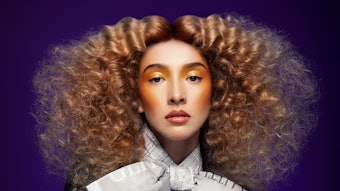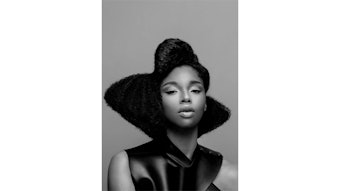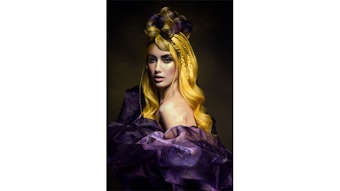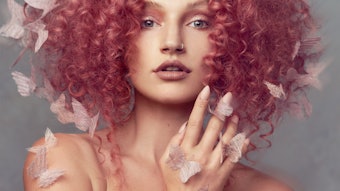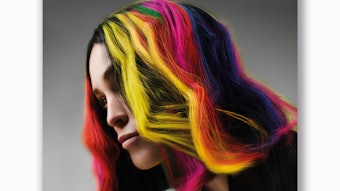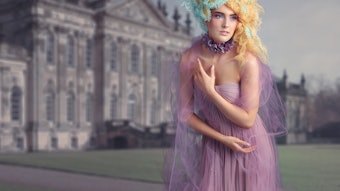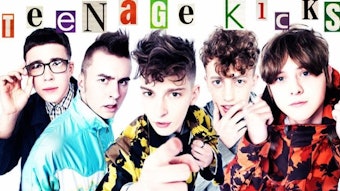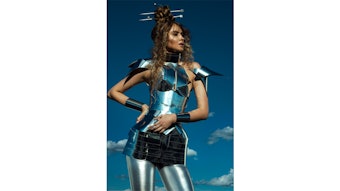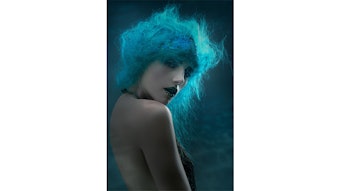Hairstyles, like fashions, come and go as each new generation tries to break away from what came before. Over the past century, hair has evolved drastically, with certain looks mimicking those of a previous era while others are truly new and innovative. Of these styles, some prominently stand out, both because of their ingenuity as well as their connection to cultural change and revolution. From women's suffrage to the Civil Rights Movement to personal identity, hair has served as a reflection of society and forward progress. Take a look at our list of the 14 wildest, most groundbreaking hairstyles of the past hundred years.
 he decade. The cut, extremely controversial in its day, has stood the test of time, remaining fashionable until today.
he decade. The cut, extremely controversial in its day, has stood the test of time, remaining fashionable until today.
Click through to see the next groundbreaking style.
[Image: Bain News Service via Wikimedia] [pagebreak]
 became a symbol of the empowered working woman.
became a symbol of the empowered working woman.
[Image: Thinkstock] [pagebreak]
 eration, and soon acted as manifestation of new American ideals and progress.
eration, and soon acted as manifestation of new American ideals and progress.
[pagebreak] [Image: Metro Goldwyn-Mayer, Inc. via Wikimedia]
 as born. Stars like Audrey Hepburn in the film Roman Holiday, as well as Mia Farrow in Rosemary's Baby and fashion icon Twiggy helped increase the popularity of the pixie, and the timeless look remains popular today.
as born. Stars like Audrey Hepburn in the film Roman Holiday, as well as Mia Farrow in Rosemary's Baby and fashion icon Twiggy helped increase the popularity of the pixie, and the timeless look remains popular today.
[Image: Thinkstock] [pagebreak]
 o longer fashionable in all its voluminous glory, still plays a role in influencing contemporary styles that focus on ingenuity.
o longer fashionable in all its voluminous glory, still plays a role in influencing contemporary styles that focus on ingenuity.
[Image: Thinkstock] [pagebreak]
 ation and creativity for stylists and for women across the country.
ation and creativity for stylists and for women across the country.
[Image: Ronald Dumont via Getty Images] [pagebreak]
 political symbol, intrinsically linked to black pride and a refusal to assimilate into a dominant, intolerant society. The Afro remains popular today as African Americans continually strive to break down outdated beauty standards and embrace a resurgence in natural hairstyles.
political symbol, intrinsically linked to black pride and a refusal to assimilate into a dominant, intolerant society. The Afro remains popular today as African Americans continually strive to break down outdated beauty standards and embrace a resurgence in natural hairstyles.
[Image: Lisa Liang via Wikimedia] [pagebreak]
 een men and women as men wore their hair long and women cut theirs short. Soon, the shag was born, and hair was forever changed. The universally flattering style involved a multitude of layers in varying lengths with feathering typically incorporated at the top and sides. Today, the shag's influence can still be clearly seen in many popular hairstyles.
een men and women as men wore their hair long and women cut theirs short. Soon, the shag was born, and hair was forever changed. The universally flattering style involved a multitude of layers in varying lengths with feathering typically incorporated at the top and sides. Today, the shag's influence can still be clearly seen in many popular hairstyles.
[Image: Silver Screen Collection via Getty Images] [pagebreak]
 ecame the style of the day. This new emphasis on chemical alteration led the way for future hair innovations that remain relevant today.
ecame the style of the day. This new emphasis on chemical alteration led the way for future hair innovations that remain relevant today.
[Image: Thinkstock ] [pagebreak]
 pan>
pan>
During the late 1980's and into the 1990's, the punk subculture began to arise as a protest against conformity and complacency in the United States. Categorized by new forms of music, art, dance, fashion and lifestyle, punk was about rebellion and anti-establishment views. The intense rejection of conformity led to a new way of thinking about outward appearance, extending to hairstyles in the form of mohwaks, liberty spikes and brightly colored hair. Hair was seen as a major way to express individuality, the wilder the better, and served as an identifier for the individual.
[Images: Bengt Nyman and User Lyo via Wikimedia] [pagebreak]
 sides. The exaggerated, geometric look didn't last long, fizzling out almost entirely by 1997, but the style was revolutionary and unlike anything else in its day.
sides. The exaggerated, geometric look didn't last long, fizzling out almost entirely by 1997, but the style was revolutionary and unlike anything else in its day.
[Image: NBC Universal via Getty Images] [pagebreak]
 ingle head of hair, becoming acceptable. The look has even trickled down from fashion runways to salons as wild, vibrant hair becomes mainstream.
ingle head of hair, becoming acceptable. The look has even trickled down from fashion runways to salons as wild, vibrant hair becomes mainstream.
[Image: Thinkstock] [pagebreak]
 ere soon.
ere soon.
[Image: Thinkstock]
